“Once Upon A Time” Part 3 of 3
A Forgotten Legacy
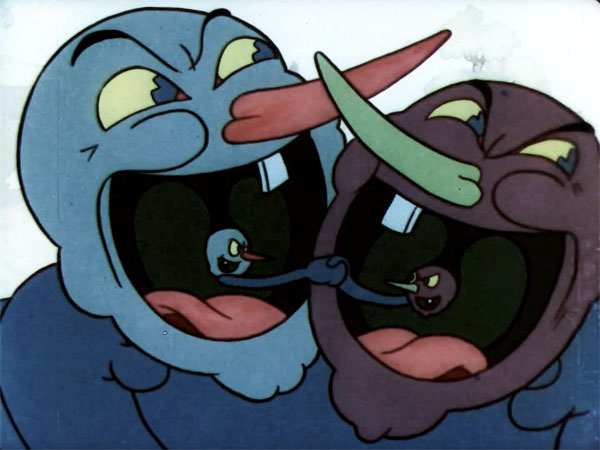
As stated in part one in this trio of articles, it appears Once Upon A Time is just as significant to animation and film history as several early Disney Silly Symphony cartoons such as Three Little Pigs. While many readers may not agree due to the film’s crude animation, reviews that were published in various trade magazines and in various newspapers across the country throughout the 1930s justify this claim. Upon its release, the cartoon received a lot of praise and rave reviews from trade magazines such as Film Daily, The Hollywood Reporter, etc., These reviews emphasized the cartoon’s use of music, the lack of any advertising and commended it’s use of Technicolor.
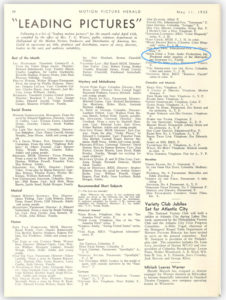 • The Educational Screen stated it was “a novel and humorous safety film … unusual in that it is the first animated sound cartoon comedy in Technicolor ever used to promote safety on the streets and highways of the nation”.
• The Educational Screen stated it was “a novel and humorous safety film … unusual in that it is the first animated sound cartoon comedy in Technicolor ever used to promote safety on the streets and highways of the nation”.
• Motion Picture Herald labeled the film “exploitable” and described it as a subject “excellently done in Technicolor” and a “valuable piece of exploitable material for any exhibitor”.
• The Philadelphia Exhibitor described the Technicolor cartoon as a “unique achievement in using motion picture entertainment to teach street safety”.
In addition, (from doing some research through Newspaper Archive) it’s worth noting that a number of local newspapers across the country highlighted the cartoon in their now playing sections. Overall the cartoon appears to have actually been well received by the general public, and by state and local police departments across the country who saw it as an affective resource. In April of 1935, Once Upon A Time was labeled a leading picture by the Motion Picture Herald, and that month Metropolitan Life Insurance Company issued sheet music of it’s reportedly hit song with a focus of having the song taught in schools.
From the time of its release and up to World War II, the cartoon was shown in numerous movie theaters around the country as an added attraction to hundreds of people. It was also the spotlight attraction at free non-theatrical screenings at civic group meetings, school auditoriums/gymnasiums, factory cafeterias, and outdoor free movie screenings at town commons, parks, fairs, etc. (It’s worth noting that these free screenings would make it the first Technicolor film ever produced with the intent of being free entertainment.)
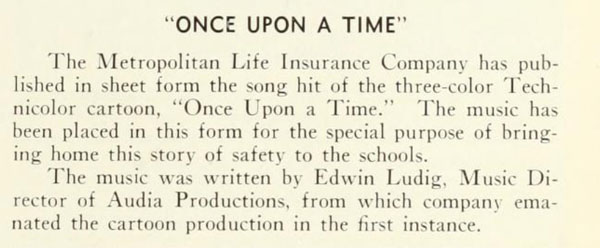
The success of Once Upon A Time appears to have inspired other safe driving animated short subjects, as following the end of Disney’s exclusive Technicolor contract, automobile manufacturers and insurance companies across the United States invested in similar productions. General Motors and the Jam Handy Organization produced the very popular We Drivers safety mixed media documentary-comedy film in 1936, which featured several Technicolor animated sequences. (This film and it’s history will be discussed at a later date.)
Aetna Life and Casualty Insurance Company contracted the Ted Eshbaugh Studios to make a series of Safe Driving Technicolor cartoons. Two entries, The Allstar Driver and It Pays to Play Safe are reported to have been completed and released in 1938. (As of early 2019 these two, and possibly other, Safe Driving cartoons are missing in action.)
While these other films were well received by theater audiences, Once Upon A Time appears to have been one of the more favorable as it was in continuous use throughout the 1930s. In 1938, with the first issues of Business Screen Magazine being published, Once Upon A Time was frequently praised and used as an example on how to use animation, color, and humor for industrial films. Business Screen Magazine even cited it as a ‘prize winning’ film and how the film’s popularity was ‘undiminished after years in use’. The cartoon’s continuous popularity prompted the Metropolitan Life Insurance Company to exhibit it at their 1939 and 1940 Worlds Fair exhibits. Following World War II, theatrical use of the film seems to have halted, however non-theatrical showings continued well into the 1950s with Black & White and Kodachrome prints. It wouldn’t be until the late-1950s, or possibly even the 1970s when the Metropolitan life Insurance company would finally retire the film from circulation.
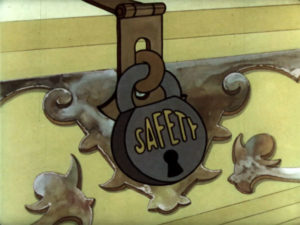 In 2018, many first time viewers will view this film as an odd curio from yesteryear and rightfully laugh at the idea of it being significant to film and animation history. However when looking at the history surrounding the cartoon and the number of accidents it helped prevent (and lives it saved) Once Upon A Time is a commendable effort by Frank Goldman and Edwin E. Ludig. While the cartoon was the second non-Disney three-strip Technicolor animated film to have been made (Ted Eshbaugh’s Wizard Of Oz was the first, and appears to have enjoyed a very brief theatrical release), it does have several first time achievements under it’s belt:
In 2018, many first time viewers will view this film as an odd curio from yesteryear and rightfully laugh at the idea of it being significant to film and animation history. However when looking at the history surrounding the cartoon and the number of accidents it helped prevent (and lives it saved) Once Upon A Time is a commendable effort by Frank Goldman and Edwin E. Ludig. While the cartoon was the second non-Disney three-strip Technicolor animated film to have been made (Ted Eshbaugh’s Wizard Of Oz was the first, and appears to have enjoyed a very brief theatrical release), it does have several first time achievements under it’s belt:
• The first three-strip Technicolor educational film produced, and the first to use the process as an educational aid.
• The first Technicolor film to be offered for free to theatrical exhibitors and groups.
• The first three strip Technicolor film to have been (legally) shown for free in non-theatrical venues such as school auditoriums, and free movies in the park events.
• The first three-strip Technicolor film and also animated cartoon ever made to successfully address a serious public safety issue.
When looking at all of these factors, its very appropriate to make the claim that Once Upon A Time is historically significant and just as important as several Disney Silly Symphony’s. What seems to prevent the film from being considered as such is its crude animation. However, when looking at Frank Goldman’s ambitious portfolio, and Once Upon A Time’s other high production values such as Louis Jambor’s backgrounds and Edwin E. Ludig’s memorable (and reportedly popular) musical score, the author feels confident that it was Goldman’s intent to have the animation up to the same production values as his other Audio and later Jam Handy films. While this did not happen, Frank Goldman, Audio Productions, and Metropolitan Life Insurance were still able to produce a highly recognized film that apparently helped saved lives. With that in mind there is a valuable lesson to be learned from this history: Even though things may not work out as envisioned, it’s still possible to make a positive difference in society…
So, here is the cartoon again for readers to enjoy with a different viewpoint:
And when you are done viewing it, be sure to take this Safe Driving quiz on the back of the sheet music to Once Upon A Time….
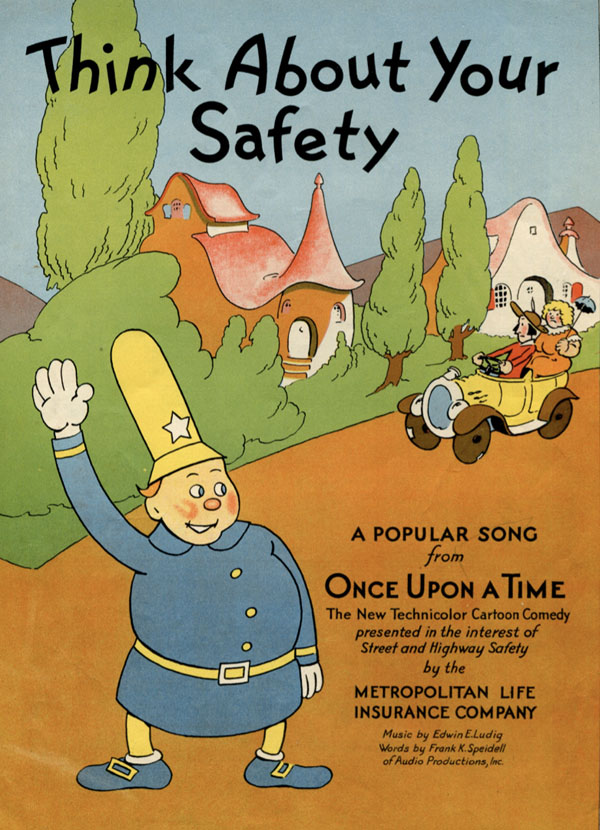
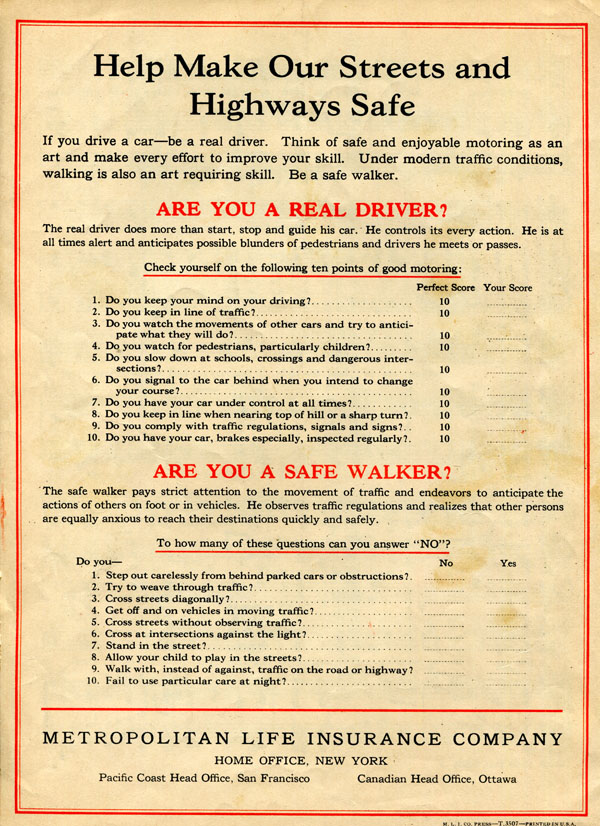
Acknowledgements: This trilogy of articles which took around two years to research and write (how time flies!), would not have been possible without the assistance of George Willeman, JB Kaufman, Jerry Beck, Ray Pointer, Rick Prelinger, Charlie Judkins, Tommy Stathes, Steve Stanchfield, David Gerstein, Devon Baxter, James Layton and Gordon Hayward. The author is thankful for their help and generosity.


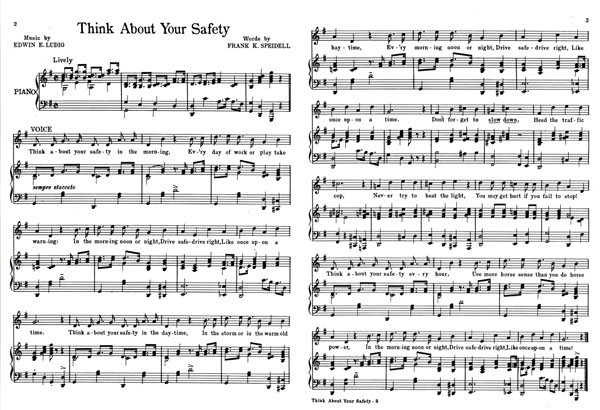
 Jonathan A. Boschen is a professional videographer and video editor, who is also a film and theatre historian. His research deals with pre-1970s movie theaters in New England and also film history pertaining to the Jam Handy Organization, Frank Goldman, Ted Eshbaugh, Jerry Fairbanks, and industrial films. (He is a huge fan of industrial animated cartoons!). Currently, Boschen is working on a documentary on the iconic Jam Handy Organization.
Jonathan A. Boschen is a professional videographer and video editor, who is also a film and theatre historian. His research deals with pre-1970s movie theaters in New England and also film history pertaining to the Jam Handy Organization, Frank Goldman, Ted Eshbaugh, Jerry Fairbanks, and industrial films. (He is a huge fan of industrial animated cartoons!). Currently, Boschen is working on a documentary on the iconic Jam Handy Organization.






















































Mad props to Boschen for an utterly amazing 3-part dissection of “Once Upon a Time!”
Thanks! 🙂
you’d think metlife would renew the copyright and protect it like Three Little Pigs but no it has to end up on Thunderbean and *insert triple digit number here* classic cartoons dvds in favor of Charles Schulz’s Peanuts characters which SPOILER ALERT they retired too.
I have a HUGE love-hate relationship with Disney, and this dates back to when the only thing they bought was ABC. My autism was developing and some of their songs were bothering me, so I’d never watch that movie for a while. So I tried to boycott a handful of Disney and Pixar until 2000. (I’d still refuse to watch some of their movies, though). It weaned overtime, but reading certain things like Disney buying Lucasfilm made almost write to Diane Disney Miller (!), but thankfully Steve Stanchfield stopped me.
Finding alternatives, like Looney Tunes, Peanuts, Popeye, Screen Songs (a highly important and underrated series that deserves a complete series Blu-ray, both Fleischer and Famous plus some surprises), and others made me think there is rebellion against the Mouse.
That’s all I have to say for now
“The first three-strip Technicolor educational film produced, and the first to use the process as an educational aid.”
It certainly was the first ANIMATED educational in the newer three strip process.
Some of the early LIVE-ACTION “educationals” (as apposed to RKO’s LA CUCARACHA and Warner’s SERVICE WITH A SMILE) are worth mentioning.
Wilding Picture Productions of Detroit (and later Chicago) preceded ONCE UPON A TIME just a bit by filming THE ROMANCE AND THRILL OF CHICAGO’S “CENTURY OF PROGRESS” in the new process (per FILM DAILY, October 30, 1933). https://www.youtube.com/watch?v=QGfRgU4cPrY Now… one can debate this one since it is not completely in color. Part of it is in black and white.
Simultaneous in production to ONCE UPON A TIME were the first MGM Traveltalks in the new process, featuring host James FitzPatrick and being filmed by Ray Fernstrom in Holland and Switzerland in the months of April and May 1934. HOLLAND IN TULIP TIME was released September 18th.
June 23, 1934’s issue of FILM DAILY reported that the first of Robert C. Bruce’s “Musical Moods” travelogues had been completed in the new process. IRISH MELODY was officially released until October. Intriguingly this was also backed by Audio Productions with First Division assisting in distribution. However it may be more “artsy” than educational.
As usual, another terrific entry, here; very entertaining.